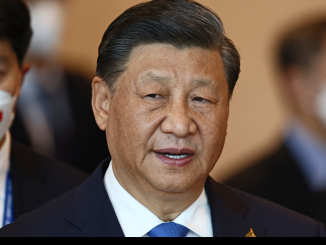
With global fears mounting, the threat of nuclear weapons has never felt so high. So what would the effect of one of the world’s most powerful nukes be on a city like New York?
The Tsar Bomba is the most powerful weapon ever designed by Russia and is thought to be one of the most powerful in the world.
The hydrogen bomb was tested over Novaya Zemlya in the Arctic Ocean. The explosion was so massive that it broke windows over 900 kilometers away and caused damage to buildings even further. The shockwave circled the Earth multiple times.
{snip}
The massive weapon has a huge fireball radius of 6.72 kilometers, and everything within this area is “effectively vaporized”.
In this scenario, the entirety of Manhattan, including Central Park, up to Harlem, would be obliterated in an instant.
As would be Long Island City, Downtown Brooklyn, and Williamsburg. Jersey City, Hoboken, Weehawken, Union City, Guttenberg, North Bergen, and Fairview in New Jersey would also be swallowed up.
The moderate blast damage radius, in which buildings collapse and death would be widespread, stretches halfway up Long Beach and engulfs Yokers and Scarsdale, as well as Newark and Elizabeth in New Jersey.
{snip}
It would cover as far as Brentwood in Long Island, extending north beyond Putnam Valley as far down as Lakewood Township, New Jersey.
As far as Bridgeport and New Haven would still be within the light blast damage radius, which would extend almost as far as Mastic Beach, Long Beach, and Trenton, NJ.
Here, glass windows would shatter due to the pressure of the nuclear explosion.
Most powerful nuclear bombs ever created
Tsar Bomba (AN602)
Country: Soviet Union
Yield: 50-58 megatons of TNT (originally designed for 100 megatons)
Test Date: October 30, 1961
Description: The Tsar Bomba is the most powerful nuclear bomb ever detonated. It was a hydrogen bomb and was tested over Novaya Zemlya in the Arctic Ocean.
{snip}
B41 (Mk-41)
Country: United States
Yield: 25 megatons of TNT
Description: The B41 was the most powerful thermonuclear bomb ever produced by the United States. It was in service from 1960 to 1976 and was capable of being delivered by strategic bombers like the B-52.
Castle Bravo
Country: United States
Yield: 15 megatons of TNT
Test Date: March 1, 1954
Description: Castle Bravo was the code name for the first test of a dry fuel hydrogen bomb by the United States. The explosion was much larger than expected due to a design error, resulting in significant radioactive fallout, affecting nearby inhabited atolls.
Ivy Mike
Country: United States
Yield: 10.4 megatons of TNT
Test Date: November 1, 1952
Description: Ivy Mike was the first successful test of a hydrogen bomb by the United States. The device used liquid deuterium as fuel, making it more of an experimental device than a deliverable weapon.
{snip}
RDS-37
Country: Soviet Union
Yield: 1.6 megatons of TNT
Test Date: November 22, 1955
Description: The RDS-37 was the first Soviet two-stage thermonuclear bomb and was a significant milestone in the development of Soviet nuclear capability. It demonstrated the Soviet Union’s ability to produce large-yield hydrogen bombs.
* Original Article:
https://www.irishstar.com/news/us-news/russias-most-powerful-nuke-would-33489571.amp


